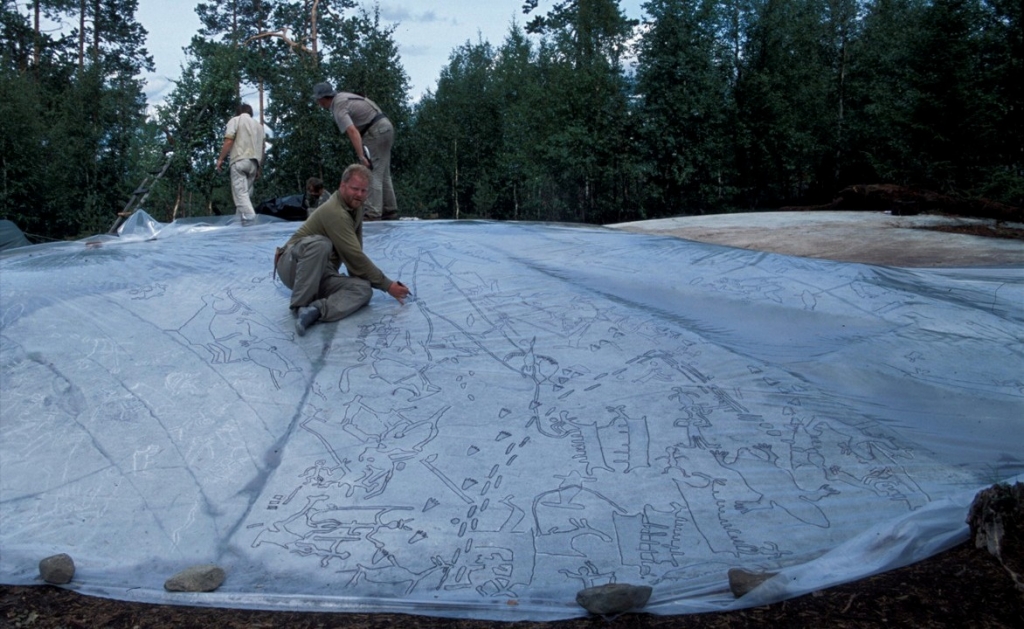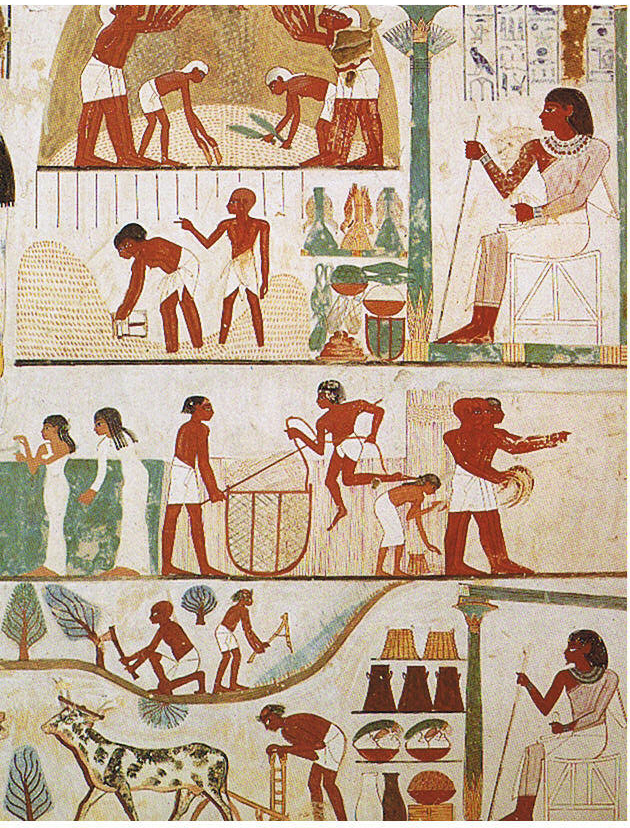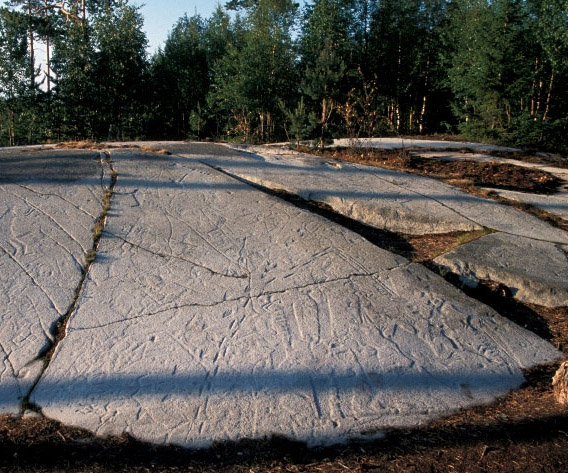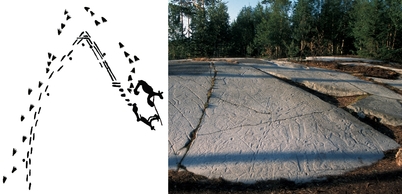
World's Oldest Comics: The Kanozero Petroglyphs
In Understanding Comics, which Stewart Brand described as “a seminal work at the level of Edward Tufte’s Envisioning Information,” Scott McCloud defined comics as “Juxtaposed pictorial and other images in deliberate sequence, intended to convey information and/or to produce an aesthetic response in the viewer.” Using this definition, McCloud proposed several examples of the earliest known comic: the 11th-century CE Bayeaux Tapestry, which tells the story of William I’s conquest of England; the Codex Zouche-Nuttall, an illustrated 14th-century CE Mixtec manuscript that narrates the life of Lord Eight Deer Jaguar Claw; and Egyptian tomb paintings like the harvest scenes in the Tomb of Menna, or this example from the Tomb of Nakht.
Older than all of these, though, are the Kanozero Petroglyphs in northwestern Russia, which were carved between 5,000 and 6,000 years ago. On an expedition in 02012, Jan Magne Gjerde and his colleagues from Tromsø University Museum peeled layers of sod from the ancient stones, revealing images of boats, moose, beavers, and harpoons.
One series of images depicted a solitary hunter on skis, tracking a bear uphill. According to Past Horizons, “The ski tracks are just as one would expect for someone going up a slope with a good distance between the strides. The hunter then gets his feet together, skis down a slope, stops, removes his skis, takes four steps – and plunges his spear into the bear.” Describing the find, Gjerde said, “This is the oldest example of a cartoon petroglyph we know of, at least in Northern Europe, so it was utterly thrilling to get the chance to be part of this discovery.”
In their ten days at the site, Gjerde and his team colored the petroglyphs with chalk, covered them with plastic sheeting, then traced their outlines onto the plastic with felt-tip pen. Although it was a cumbersome procedure—especially when unexpected rainstorms drenched the plastic sheets—it produced a portable record of the carvings that could be taken back to the museum and studied at length.
As Gjerde noted, the petroglyphs add a layer of understanding to the archaeological record at this site. “We can excavate a settlement or find arrowheads but we usually don’t have direct evidence of what sort of animals have been hunted with such weapons.” At Lake Kanozero, the comics carved into the rock not only show what animals the ancient residents of the area hunted, but also how they hunted them. As Gjerde put it, “These people, at this spot, documented part of their lives and I was fortunate to be one of the first people in 5,000 years to see it.”
Join our newsletter for the latest in long-term thinking
Subscribe


